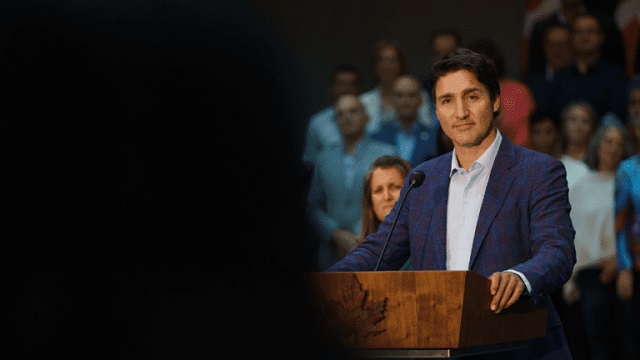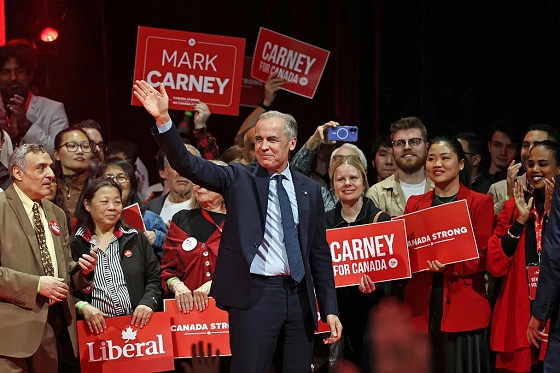By Bjørn Lomborg
At a time when public finances are strained, and Canada and the world are facing many problems and threats, we need to consider policy choices carefully. On climate, we should spend smartly to solve it effectively, making sure there is enough money left over for all the other challenges.
A sensible response to climate change starts with telling it as it is. We are bombarded with doom-mongering that is too often just plain wrong. Climate change is a problem but it’s not the end of the world.
Yet the overheated rhetoric has convinced governments to spend taxpayer funds heavily on subsidizing current, inefficient solutions. In 2024, the world spent a record-setting CAD$3 trillion on the green energy transition. Taxpayers are directly and indirectly subsidizing millions of wind turbines and solar panels that do little for climate change but line the coffers of green energy companies.
We need to do better and invest more in the only realistic solution to climate change: low-carbon energy research and development. Studies indicate that every dollar invested in green R&D can prevent $11 in long-term climate damages, making it the most effective long-term global climate policy.
Throughout history, humanity has tackled major challenges not by imposing restrictions but by innovating and developing transformative technologies. We didn’t address 1950s air pollution in Los Angeles by banning cars but by creating the catalytic converter. We didn’t combat hunger by urging people to eat less, but through the 1960s Green Revolution that innovated high-yielding varieties to grow much more food.
In 1980, after the oil price shocks, the rich world spent more than 8 cents of every $100 of GDP on green R&D to find energy alternatives. As fossil fuels became cheap again, investment dropped. When climate concern grew, we forgot innovation and instead the focus shifted to subsidizing existing, ineffective solar and wind.
In 2015, governments promised to double green R&D spending by 2020, but did no such thing. By 2023, the rich world still wasn’t back to spending even 4 cents out of every $100 of GDP.
Globally, the rich world spends just CAD$35 billion on green R&D — one-hundredth of overall “green” spending. We should increase this four-fold to about $140 billion a year. Canada’s share would be less than $5 billion a year, less than a tenth of its 2024 CAD$50 billion energy transition spending.
This would allow us to accelerate green innovation and bring forward the day green becomes cheaper than fossil fuels. Breakthroughs are needed in many areas. Take nuclear power. Right now, it is way too expensive, largely because extensive regulations force the production of every new power plant into what essentially becomes a unique, eye-wateringly expensive, extravagant artwork.
The next generation of nuclear power would work on small, modular reactors that get type approval in the production stage and then get produced by the thousand at low cost. The merits of this approach are obvious: we don’t have a bureaucracy that, at a huge cost, certifies every consumer’s cellphone when it is bought. We don’t see every airport making ridiculously burdensome requirements for every newly built airplane. Instead, they both get type-approved and then mass-produced.
We should support the innovation of so-called fourth-generation nuclear power, because if Canadian innovation can make nuclear energy cheaper than fossil fuels, everyone in the world will be able to make the switch—not just rich, well-meaning Canadians, but China, India, and countries across Africa.
Of course, we don’t know if fourth-generation nuclear will work out. That is the nature of innovation. But with smarter spending on R&D, we can afford to focus on many potential technologies. We should consider investing in innovation to grow hydrogen production along with water purification, next-generation battery technology, growing algae on the ocean surface producing CO₂-free oil (a proposal from the decoder of the human genome, Craig Venter), CO₂ extraction, fusion, second-generation biofuels, and thousands of other potential areas.
We must stop believing that spending ever-more money subsidizing still-inefficient technology is going to be a major part of the climate solution. Telling voters across the world for many decades to be poorer, colder, less comfortable, with less meat, fewer cars and no plane travel will never work, and will certainly not be copied by China, India and Africa. What will work is innovating a future where green is cheaper.
Innovation needs to be the cornerstone of our climate policy. Secondly, we need to invest in adaptation. Adaptive infrastructure like green areas and water features help cool cities during heatwaves. Farmers already adapt their practices to suit changing climates. As temperatures rise, farmers plant earlier, with better-adapted varieties or change what they grow, allowing the world to be ever-better fed.
Adaptation has often been overlooked in climate change policy, or derided as a distraction from reducing emissions. The truth is it’s a crucial part of avoiding large parts of the climate problem.
Along with innovation and adaptation, the third climate policy is to drive human development. Lifting communities out of poverty and making them flourish is not just good in and of itself — it is also a defense against rising temperatures. Eliminating poverty reduces vulnerability to climate events like heat waves or hurricanes. Prosperous societies afford more healthcare, social protection, and investment in climate adaptation. Wealthy countries spend more on environmental preservation, reducing deforestation, and promoting conservation efforts.
Focusing funds on these three policy areas will mean Canada can help spark the breakthroughs that are needed to lower energy costs while reducing emissions and making future generations around the world more resilient to climate and all the other big challenges. The path to solving climate change lies in innovation, adaptation, and building prosperous economies.














